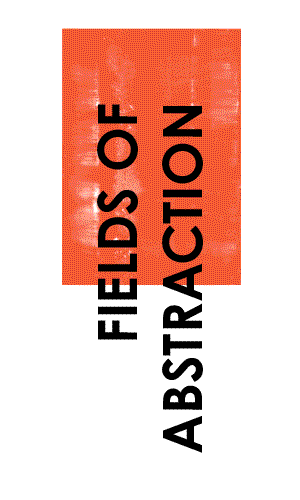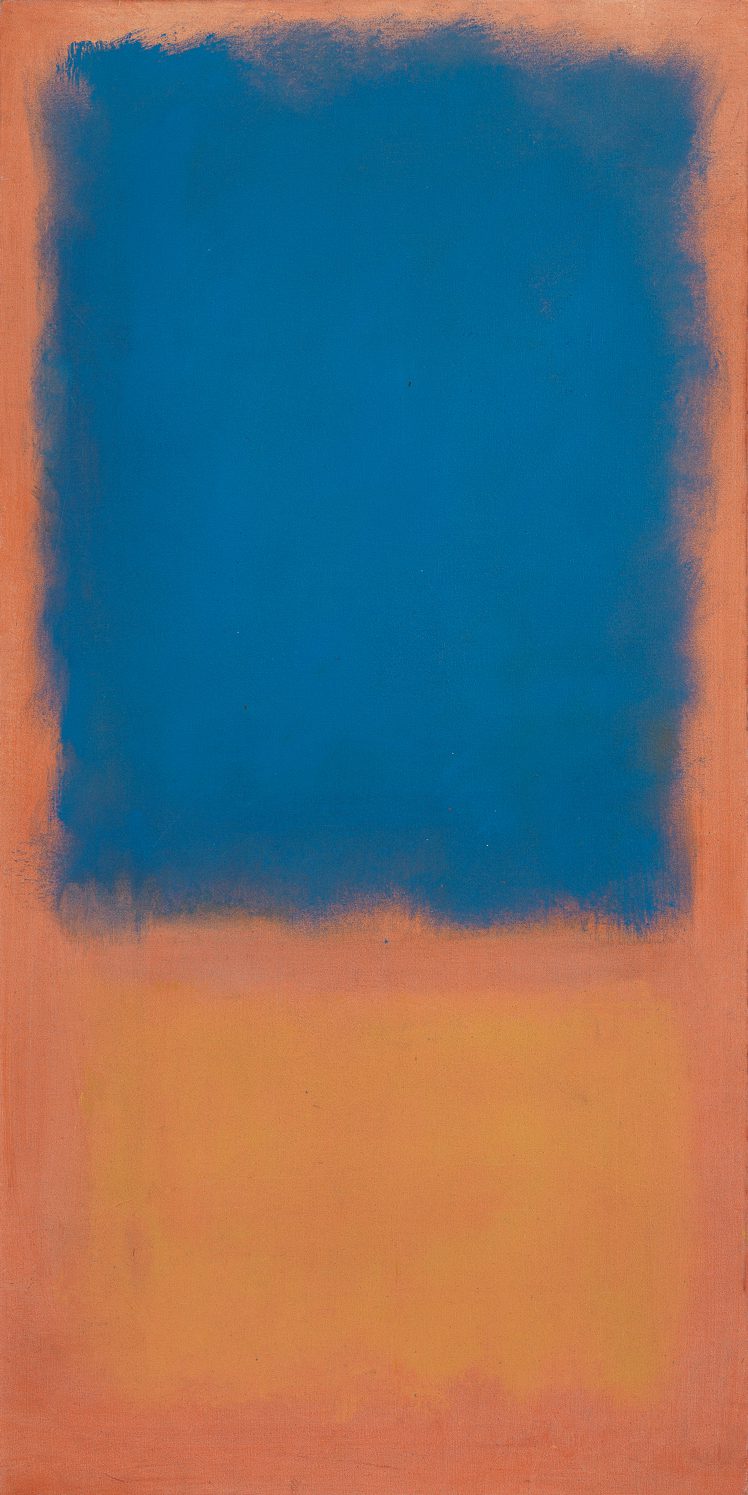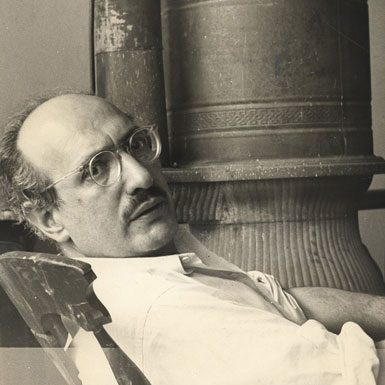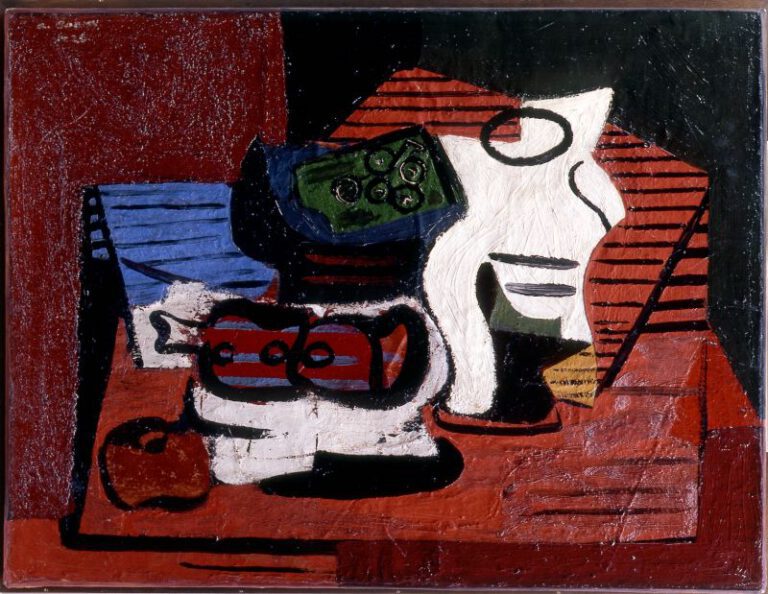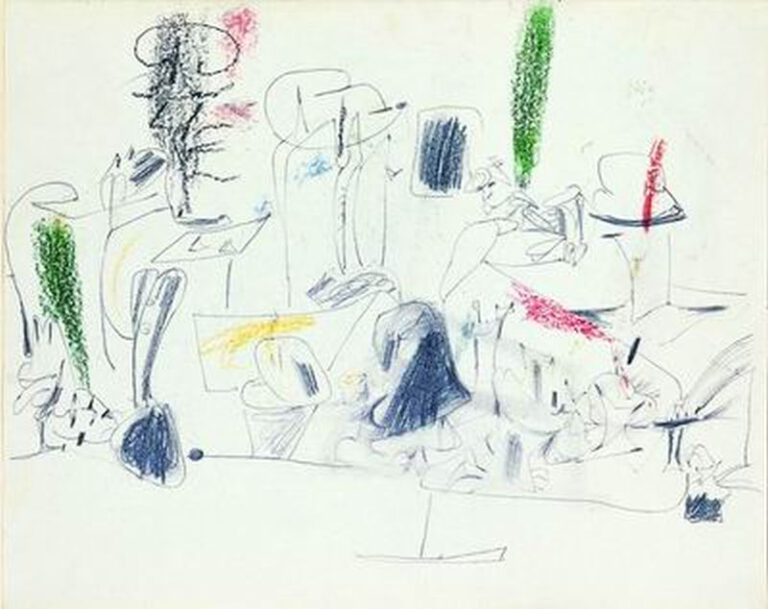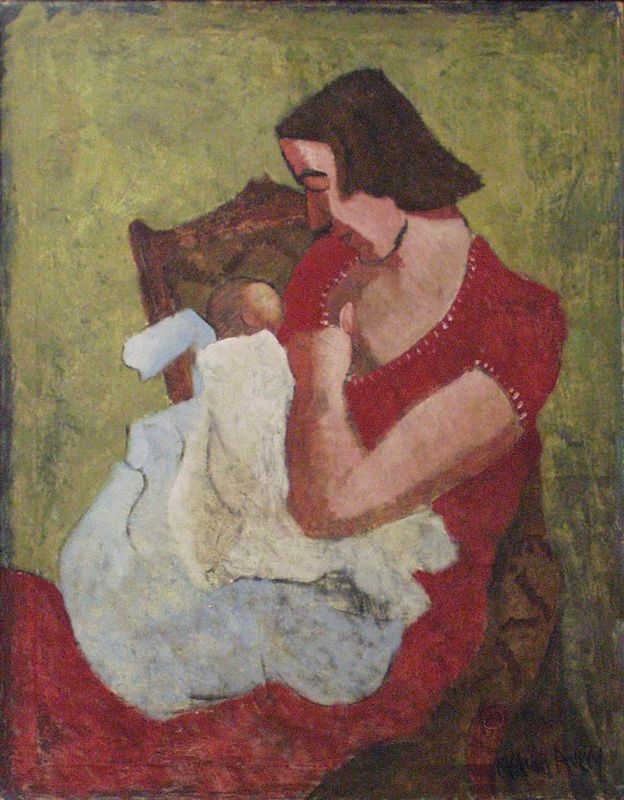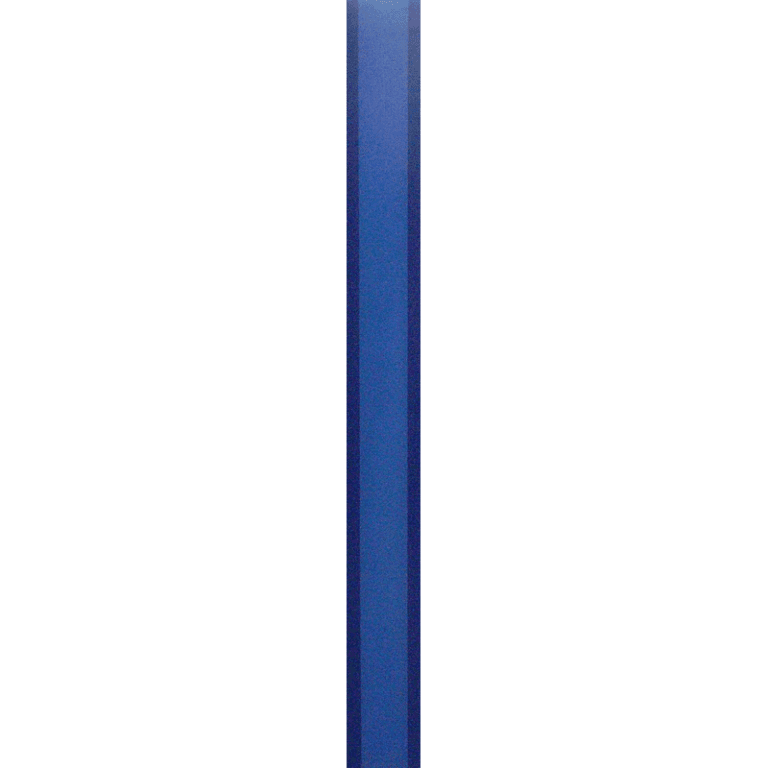Born in Latvia in 1903, Mark Rothko immigrated to the United States with his family at the age of ten. In 1925 he began to study at Parsons School of Design in New York under painter Arshile Gorky, who had a powerful influence on him and on many other Abstract Expressionists. Gorky and Rothko shared an interest in European Surrealism, and biomorphic forms populate their paintings from the early 1940s. For Rothko, these forms would ultimately give way to the floating zones of color over colored grounds for which he became well known. Described as “Color Field painting” by critic Clement Greenberg in 1955, this style was characterized by a sense of open space and an expressive use of color. Like other New York School painters such as Barnett Newman and Clyfford Still, Rothko painted to plumb the depths of his inner life and the human condition. For him, art was a profound form of communication and art-making was a moral act.
Rothko first developed his characteristic compositional strategy in 1947 and spent his career exploring the limitless possibilities of layering variously sized and colored rectangles onto fields of color. Rothko wanted the viewer to stand in close proximity to the painting, to be enveloped in its colors and swept into an emotional and existential state. “I’m interested only in expressing basic human emotions – tragedy, ecstasy, doom, and so on,” he declared. “And the fact that a lot of people break down and cry when confronted with my pictures shows that I can communicate those basic human emotions. . . . If you . . . are moved only by their color relationships, then you miss the point.”
His signature works consist of broad rectangular areas of varying number, proportions, and colors, with softened edges, hovering over each other and over the painting’s surface. A chromatic afterimage heightens this sensation, so that staring at each colored segment individually affects the perception of those adjacent to it. In this painting, blue and yellow fields of color are suspended in conflicted unity within a reddish-orange surface. The faint unevenness in color intensity reveals the artist’s exploration of the technique of scumbling: by planting bold colors on top of a haze of translucent layers of paint, he created ambiguity and gentle movement as blocks emerge and recede. In Rothko’s words, “either their surfaces are expansive and push outward in all directions, or their surfaces contract and rush inward in all directions. Between these poles you can find everything I want to say.”
Adina Kamien
